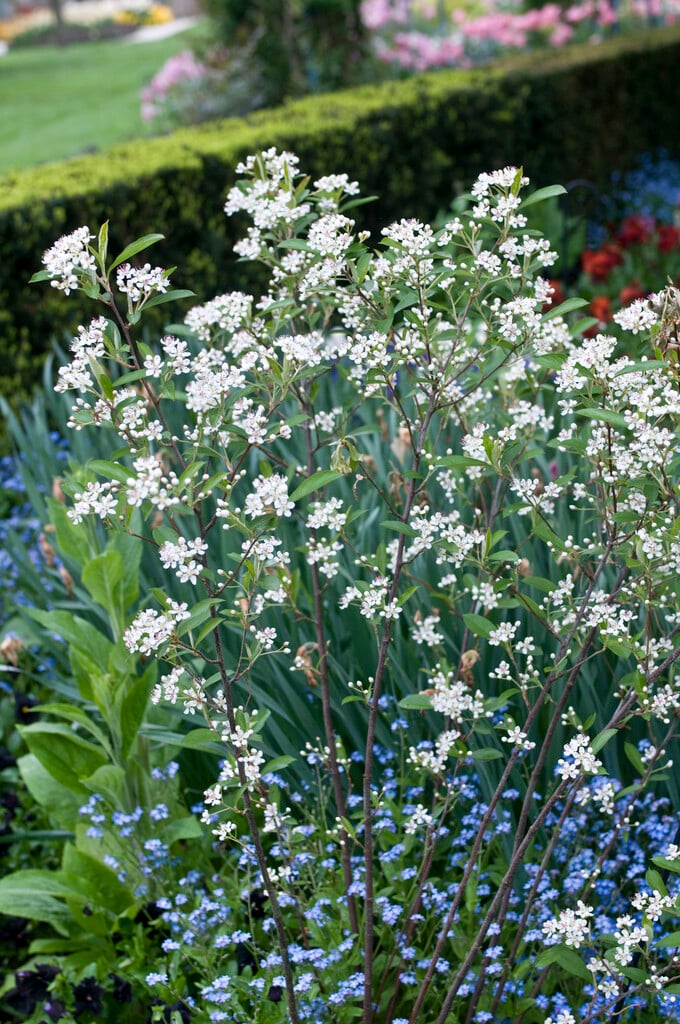Aronia × prunifolia 'Brilliant'
purple chokeberry 'Brilliant'
A deciduous shrub to 2m tall, with elliptic or obovate leaves turning brilliant red in autumn; small white flowers are followed by long-lasting bright red berries
Size
Ultimate height
1.5–2.5 metresTime to ultimate height
5–10 yearsUltimate spread
1–1.5 metresGrowing conditions
Moisture
Moist but well–drainedpH
Acid, NeutralColour & scent
| Stem | Flower | Foliage | Fruit | |
| Spring | White | Green | ||
|---|---|---|---|---|
| Summer | Green | Red | ||
| Autumn | Red | Red | ||
| Winter | Red |
Position
- Partial shade
Aspect
East–facing or North–facing or West–facing
Exposure
Exposed or Sheltered Hardiness
H7Botanical details
- Family
- Rosaceae
- Native to GB / Ireland
- No
- Foliage
- Deciduous
- Habit
- Bushy
- Potentially harmful
- The berries are edible, but bitter raw, and this tree is usually grown as an ornamental plant rather than to provide a crop of fruit in the UK
- Genus
Aronia are deciduous shrubs with simple leaves that colour well in autumn, and clusters of small white, hawthorn-like flowers followed by black, red or purple berries. These berries are edible, but are very astringent when raw; they may attract birds
- Name status
Accepted
How to grow
Cultivation
Grow in any moist but well-drained soil in sun or partial shade
Propagation
Propagate by seed in autumn outside. Can also be propagated by removing suckers and potting them up when plants are dormant. Softwood cuttings can be taken in early summer
Suggested planting locations and garden types
- Cottage and informal garden
- Flower borders and beds
Pruning
Pests
Generally pest-free
Diseases
Generally disease-free
Get involved
The Royal Horticultural Society is the UK’s leading gardening charity. We aim to enrich everyone’s life through plants, and make the UK a greener and more beautiful place.
